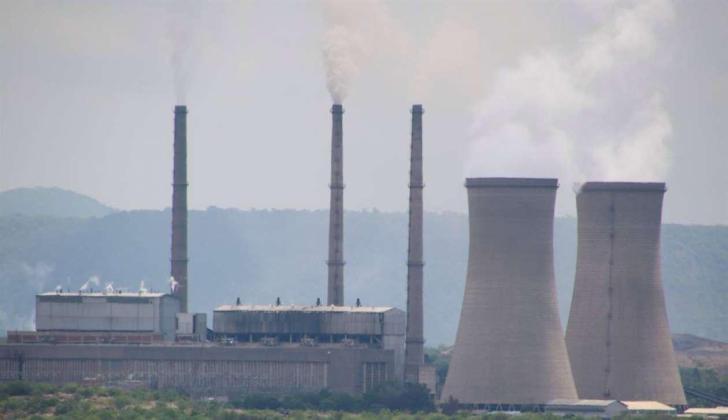News / Local
Upgrade of Hwange thermal station's old units begins
01 Dec 2024 at 08:49hrs |
0 Views

Officials from India's Jindal Steel and Power Company are finalising contracts and assessments for a major refurbishment of six aging generation units at the Hwange Thermal Power Station. The ambitious project, scheduled to commence in early 2025, aims to boost power output from the current 300 megawatts (MW) to over 800MW, significantly improving Zimbabwe's energy supply.
The six units, commissioned between 1983 and 1989 with a combined capacity of 920MW, have deteriorated over the years due to mechanical faults and aging infrastructure. The refurbishment will extend their operational lifespan by 15 to 20 years and elevate Hwange's daily power output capacity to approximately 1,500MW.
The phased project, spanning 36 to 48 months, will replace outdated turbines, generators, and control systems with modern, efficient technologies. Work will be carried out one unit at a time to maintain uninterrupted power supply for domestic and industrial users.
Energy and Power Development Minister Edgar Moyo emphasised the significance of the project, stating:
"Our strategy is to refurbish Hwange Units 1 to 6. Unit 5, which is being refurbished with internal resources and local financing, is expected to be completed by August 2025. The Indian company, Jindal, will begin work on the remaining units in the first quarter of next year."
Unit 5 is already undergoing refurbishment, funded through a combination of internal resources and a loan from a local financier. This unit's completion is expected to be a significant milestone in the overall project.
A senior Zimbabwe Electricity Supply Authority (ZESA) official noted that the aging units no longer function at their original installed capacity of 920MW.
"The equipment being replaced, such as turbines and generators, will ensure that power generation increases to 800MW across the six units. The work will proceed unit by unit to avoid shutting down all six simultaneously," the official said.
The Hwange repowering project is part of the Government's broader efforts to enhance energy security, reduce reliance on power imports, and address load-shedding. Minister Moyo highlighted measures being implemented to stabilise the power supply.
"We are maintaining the 200MW currently being imported. However, load-shedding is expected to ease during the festive season when demand drops," he said.
He also pointed to improved water allocations from the Zambezi River Authority, which will support power generation at Kariba from early 2025.
As of Friday, Zimbabwe's power generation stood at 1,178MW, with Hwange contributing 1,004MW, Kariba 124MW, and independent power producers 50MW. This falls short of the peak national demand of 1,800MW but reflects progress made with the synchronisation of Hwange Units 7 and 8 in 2023.
Despite challenges such as the El Niño weather phenomenon, national generation capacity averages 800MW to 1,000MW daily.
The Hwange refurbishment is set to be a cornerstone of Zimbabwe's energy strategy, supporting industrial growth and reducing energy shortages in the years ahead.
The six units, commissioned between 1983 and 1989 with a combined capacity of 920MW, have deteriorated over the years due to mechanical faults and aging infrastructure. The refurbishment will extend their operational lifespan by 15 to 20 years and elevate Hwange's daily power output capacity to approximately 1,500MW.
The phased project, spanning 36 to 48 months, will replace outdated turbines, generators, and control systems with modern, efficient technologies. Work will be carried out one unit at a time to maintain uninterrupted power supply for domestic and industrial users.
Energy and Power Development Minister Edgar Moyo emphasised the significance of the project, stating:
"Our strategy is to refurbish Hwange Units 1 to 6. Unit 5, which is being refurbished with internal resources and local financing, is expected to be completed by August 2025. The Indian company, Jindal, will begin work on the remaining units in the first quarter of next year."
Unit 5 is already undergoing refurbishment, funded through a combination of internal resources and a loan from a local financier. This unit's completion is expected to be a significant milestone in the overall project.
A senior Zimbabwe Electricity Supply Authority (ZESA) official noted that the aging units no longer function at their original installed capacity of 920MW.
"The equipment being replaced, such as turbines and generators, will ensure that power generation increases to 800MW across the six units. The work will proceed unit by unit to avoid shutting down all six simultaneously," the official said.
The Hwange repowering project is part of the Government's broader efforts to enhance energy security, reduce reliance on power imports, and address load-shedding. Minister Moyo highlighted measures being implemented to stabilise the power supply.
"We are maintaining the 200MW currently being imported. However, load-shedding is expected to ease during the festive season when demand drops," he said.
He also pointed to improved water allocations from the Zambezi River Authority, which will support power generation at Kariba from early 2025.
As of Friday, Zimbabwe's power generation stood at 1,178MW, with Hwange contributing 1,004MW, Kariba 124MW, and independent power producers 50MW. This falls short of the peak national demand of 1,800MW but reflects progress made with the synchronisation of Hwange Units 7 and 8 in 2023.
Despite challenges such as the El Niño weather phenomenon, national generation capacity averages 800MW to 1,000MW daily.
The Hwange refurbishment is set to be a cornerstone of Zimbabwe's energy strategy, supporting industrial growth and reducing energy shortages in the years ahead.
Source - The Sunday Mail
Join the discussion
Loading comments…































